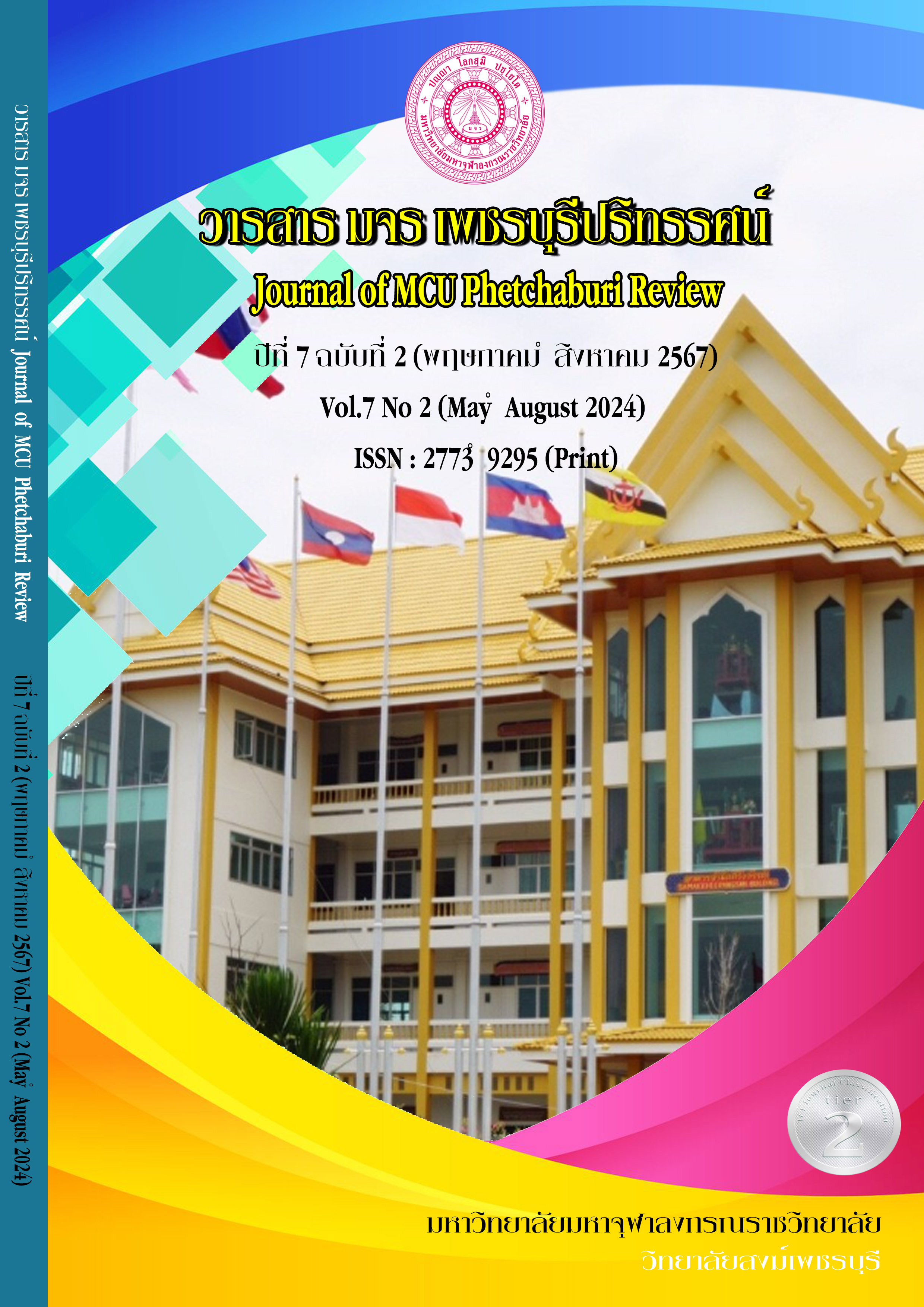THE HEALTH SUPPLY CHAIN PERFORMANCE MEASUREMENT MODEL CASE STUDY OF PHETCHABURI PROVINCE
Main Article Content
Abstract
The objectives of this research were 1) to study health performance indicators; Integrated according to the supply chain theoretical framework from international indicators and standards By using the Delphi technique, the sample group represents of 18 medical at the expert level from the government sector, used a online questionnaire as a tool to collect data. The research results were found to consist of 4 dimensions, 6 components, and 32 indicators. Measurement includes the upstream dimension, including resource elements in the provision of public health services. The midstream dimension consists of infectious disease control. and the controlling non-communicable diseases (chronic). The downstream dimension consists of health service standards. and health promotion. The population health dimension includes elements of the health situation. 2) To measure the efficiency of the health supply chain. A case study of Phetchaburi Province was found every dimension of the supply chain and every element has not met the standards set by international organizations notified. It is necessary to improve each element to be efficient. Achieve standards to improve the quality of life of the people, economy and society in the future.
Article Details

This work is licensed under a Creative Commons Attribution-NonCommercial-NoDerivatives 4.0 International License.
References
ดวงพรรณ กริชชาญชัย. (2566,) เปิดเส้นทางระบบยาและเวชภัณฑ์ไทยในห่วงโซ่อุปทานสุขภาพแห่งชาติ. เรียกใช้เมื่อ 23 สิงหาคม 2566 จาก M. Conference. MU SOCIAL ENGAGEMENT FORUM, mahidol.ac.th.
ธานินทร์ ศิลป์จารุ. (2563). การวิจัยและวิเคราะห์ข้อมูลทางสถิติด้วย SPSS และ AMOS. พิมพ์ครั้งที่ 18. กรุงเทพมหานคร : เอส. อาร์. พริ้นติ้ง แมสโปรดักส์
ปัญญา สำราญหันต์ และชิตพงษ์ อัยสานนท์. (2565). โมเดลการวัดประสิทธิภาพโซ่อุปทานด้านการดูแลสุขภาพด้วยเทคนิคของโมเดลสมการโครงสร้าง. วารสารปัญญาภิวัฒน์, 14(3), 106-120.
Garg K., Kumar C. N., & Chandra P. S. (2019). Number of psychiatrists in India: Baby steps forward, but a long way to go. Indian J Psychiatry, 61(1), 104-105.
An X, et al. (2022). Economic burden of public health care and hospitalisation associated with COVID-19 in China. Public Health, 203, 65-74.
Assembly, G. (2015). Sustainable development goals. SDGs transform our world, 2030(10.1186).
Brundtland, et al. (1987). Our common future: Oxford University Press, Oxford, GB.
Chan, M. (2018). Ten years in public health 2007-2017: report by dr margaret chan director-general world health organization: World Health Organization.
Chow, C. K., et al. (2018). Availability and affordability of essential medicines for diabetes across high-income, middle-income, and low-income countries: a prospective epidemiological study. The lancet Diabetes & endocrinology, 6(10), 798-808.
Cometto, G. et al. (2014). Health supply chain personnel: an integral part of the health workforce. In 7, 1-3.
Forehand, M. (2010). Bloom’s taxonomy. Emerging perspectives on learning, teaching, and technology, 41(4), 47-56.
Fukuda-Parr Sakiko. (2016). From the Millennium Development Goals to the Sustainable Development Goals: shifts in purpose, concept, and politics of global goal setting for development. Gender & Development, 24(1), 43-52.
Geist Monica R. (2010). Using the Delphi method to engage stakeholders: A comparison of two studies. Evaluation program planning, 33(2), 147-154.
Horner K, et al. (2009). Basic principles for use of dental cone beam computed tomography: consensus guidelines of the European Academy of Dental and Maxillofacial Radiology. Dentomaxillofacial Radiology, 38(4), 187-195.
Kendall Maurice G, & Smith B Babington. (1939). The problem of m rankings. The annals of mathematical statistics, 10(3), 275-287.
Likert, R. (1932). A technique for the measurement of attitudes. Archives of psychology.
Linstone Harold A, & Turoff Murray. (2011). Delphi: A brief look backward and forward. Technological forecasting social change, 78(9), 1712-1719.
Lugada, E. et al. (2022). Health supply chain system in Uganda: current issues, structure, performance, and implications for systems strengthening. Journal of Pharmaceutical Policy and Practice, 15(14), 1-11.
Musa Haruna Danladi, et al. (2015). Delphi Method of Developing Environmental Well-being Indicators for the Evaluation of Urban Sustainability in Malaysia. Procedia Environmental Sciences, 30, 244-249.
Okoli Chitu, & Pawlowski Suzanne. (2004). The Delphi method as a research tool: an example, design considerations and applications. Information management, 42(1), 15-29.
Prajapati Dimpy, et al. (2022). Impact of COVID-19 on Sustainability Enablers and Evaluation of Performance Index. Materials Today: Proceedings, 56, 3790-3796.
World Health Organization. (2016). Health workforce requirements for universal health coverage and the sustainable development goals. (human resources for health observer, 17).
World Health Organization. (2019). Hospital beds per 1,000 people. Retrieved March 7, 2024, from https://data.worldbank.org/indicator/SH.MED. BEDS.ZS


